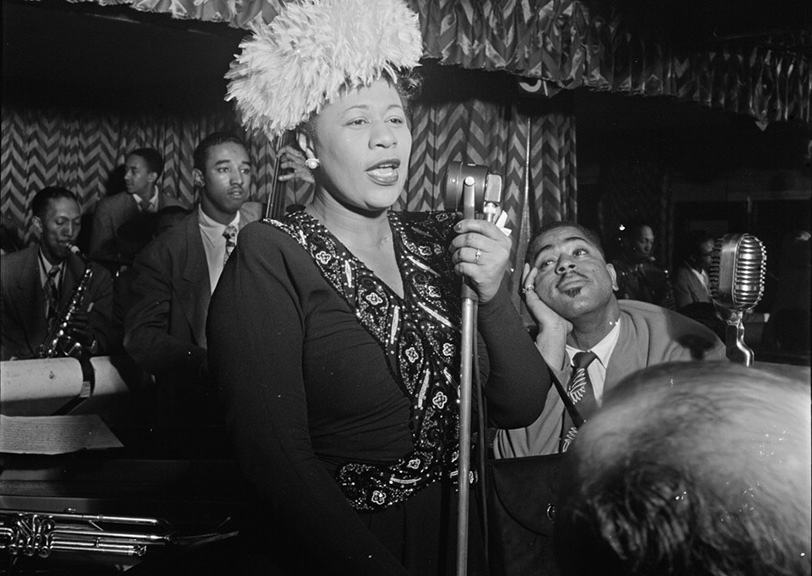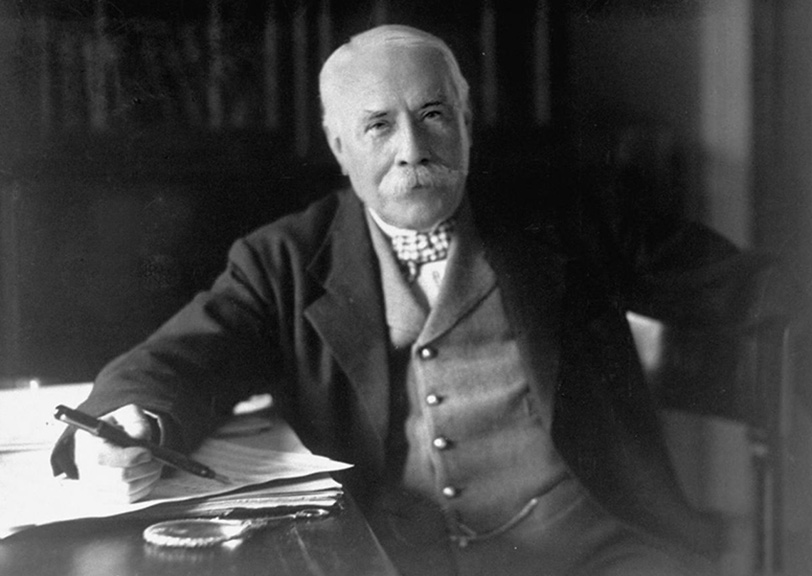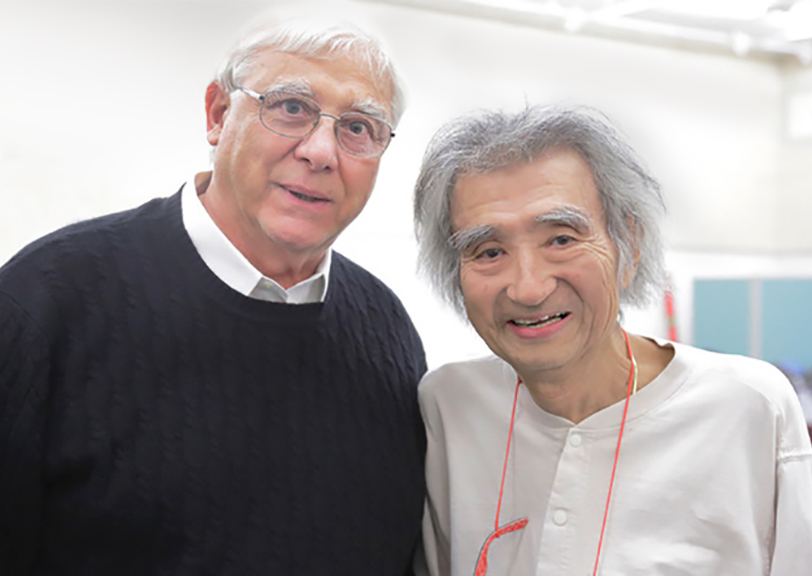ENTER YOUR EMAIL TO RECEIVE OUR WEEKLY NEWSLETTER
What’s the Lure of Yoga?
This ancient mind and body practice has a reputation for reducing stress and boosting immunity.
By Polly Ironclad
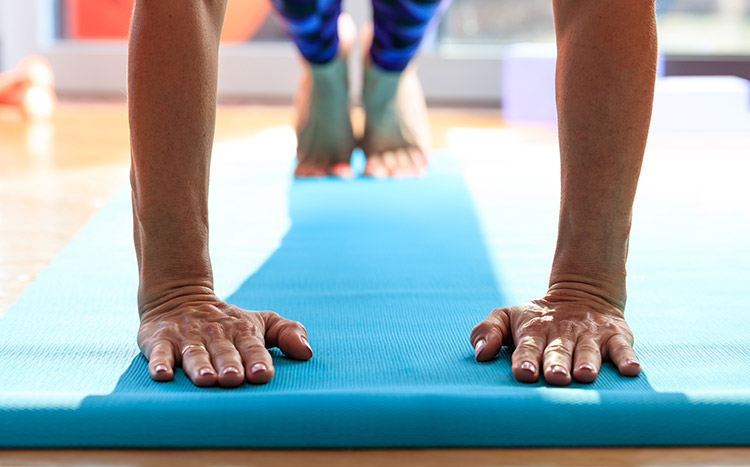
UPDATED FEB. 24, 2022
Are you wondering what the fuss has been about yoga? It’s widely believed that yoga can help reduce stress and boost immunity. Great idea, especially these days, right? But if you’re new to this activity, you may not know how to begin, and what’s involved with poses and sequences (successions of poses). Here, I’ll provide some basics. Let’s get started.
As we grow older, our bodies begin to change. Our joints become stiffer, and we lose muscle mass. The slow and gentle movements practiced during yoga keeps muscles limber, flexible, and strong. The joints also remain strong and lubricated, says Deborah Caruana, a yoga specialist in New York City. Specific breathing techniques help calm anxiety, soothe the nerves, cool or heat the body, and help attain a state of meditation.
Yoga also helps with balance; to maintain peak physical performance, all its elements must be balanced, each performing its function adequately. As we grow, the interplay between brain, eyes, muscle, bones, and nervous system is essential for maintaining good overall bodily performance. Yoga helps in lowering blood pressure, heart rate, body mass index, and cholesterol level. Result: A calmer mind, a better night’s sleep, uplifted mood, and a greater sense of relaxation.
Why is Yoga Stress-Relieving?
Yoga is the dance of every cell with the music of every breath that creates inner serenity and harmony. –Debasish Mridha. Sounds amazing, but that’s what keeps aficionados true to this discipline.
As I see it, this is the perfect mind-body practice, combining breathing, mindfulness, and movement. There are eight limbs, or aspects, of yoga developed by the ancient sage Patanjali, which delve into how you can make peace with the fluctuations inside your head.
Moral restrictions: non-harming and truth-telling
Observances: clear, content, persistent, and self-reflecting
Physical postures
Breath control
Sensory withdrawal: gaining control over stimuli and clearing the mind
Concentration
Meditation
Enlightenment
Essentially, yoga is far more than a workout; it allows you to slow down and observe your deeper self. By practicing the eight limbs, you may come to realize that being affected by stress is harmful, and worrying about the future is not being content with the present.
To change how you handle stress, yoga first encourages you to perceive it differently. Instead of being a victim of stressful thoughts, you’re asked to become an observer, creating a distance from yourself. Objectively observe the emotions and let them flow through your mind. There is no need to hold onto them—just as outdated clothes only clutter your closet.
Breath control, sensory withdrawal, concentration, and meditation are all techniques that help you clear the mind and get a better grip on stress. They not only help prevent negative health consequences, but also boost your immunity by releasing endorphins, which are sometimes referred to as wellness hormones.
Right after a yoga practice, many practitioners feel an immediate sense of bliss, but in the long term, consistent practice can make you less vulnerable to stressful triggers. For example, one study (See “Effect of integrated yoga practices on immune responses…”) showed that practicing daily yoga sequences for twelve weeks helped medical students remain calm during stressful exams, whereas those who did not practice yoga suffered from stress and anxiety.
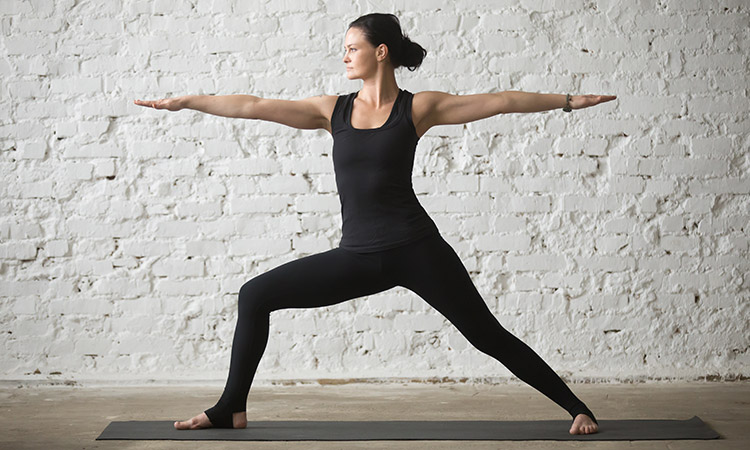
To name one pose worth practicing, Warrior two pose (Virabhadrasana B) is a powerful stretch for the legs, hip, and chest. It focuses the mind and improves strength and flexibility.
. . . . . . . . . . . .
Relaxing Yoga Sequences
Apart from improving your mental strength, physical movements can help with muscle relaxation and deep breathing. There are many different yoga sequences; some focus on relaxation; others are more about building muscle strength.
Stress-relieving sequences typically consist of stretchy poses that open up your chest to make room for deeper breaths. One example: Sit on your knees and extend your upper body straight, with hands over the head for a long stretch into the air. Alternatively, stretch the torso into the ground with child’s pose, letting your forehead feel the earth beneath you.
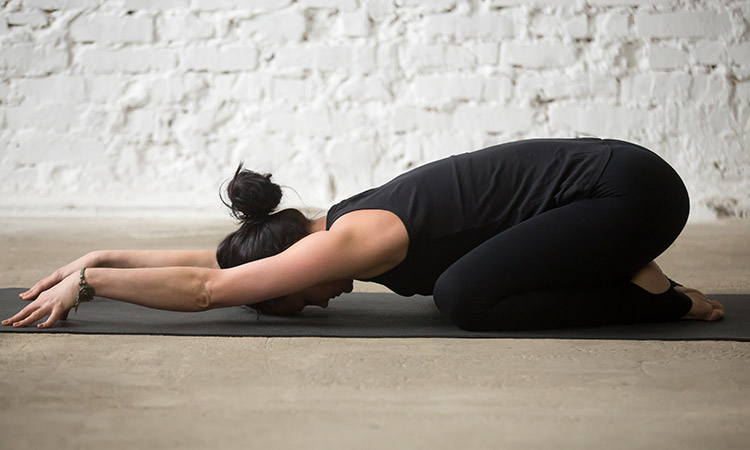
Extended child’s pose (utthita balasana) provides a gentle stretch for the back and shoulders, and stretches the upper body, all the way to the fingertips.
. . . . . . . . . . . .
If you have attended a yoga class, savasana, or corpse pose, is the ultimate relaxation pose at the end of a yoga sequence. It looks like simply lying down on the floor, but is actually a way to eliminate your long-held tensions and ease the mind.
When you are relaxed, the muscles and diaphragm stretch, improving your flexibility, fatigue and breathing depth. Don’t overlook these changes in your body; they can take away the stress you’ve accumulated for months.
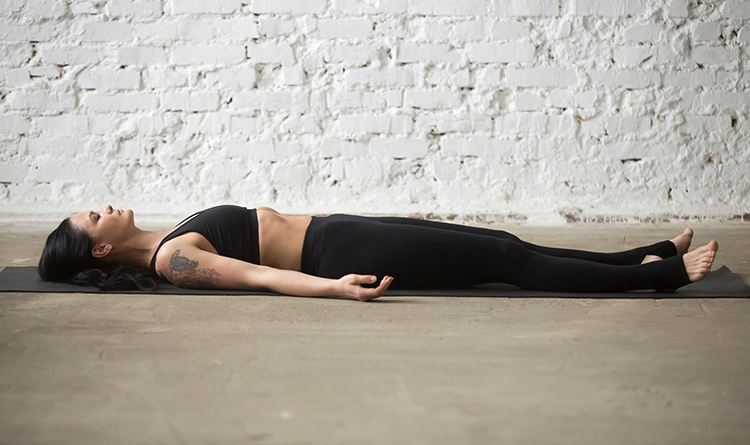
Corpse pose (savasana) relaxes the body overall, reduces stress and fatigue, calms the mind, and lowers blood pressure.
. . . . . . . . . . . .
Immune-Boosting Foods Go Hand-in-Hand
There are many healthy habits besides yoga that could balance out the stresses in your life. These habits work synergistically, meaning that their combined effect is greater than that of each of them alone.
The most important of them is diet, as what you put into your body largely determines what you are. If you eat predominantly processed foods that are high in calories but low in nutritional value, then your health will suffer, no matter how much yoga you practice.
In contrast, if you incorporate nutrient-rich superfoods, (see “Eat Well, Live Well: Boost Your Immune System”) such as turmeric and ginger, they act as natural antidotes to stress-induced damage. To help your body absorb the maximal amount of micronutrients, fulvic acid (See “9 Fulvic Acid Benefits”), a traditional remedy used by ancient Himalayans, is of great benefit. Don’t be intimidated by the word acid. The reference here is to organic acids naturally produced by microorganisms in soil, and have been shown to improve gut health and immunity, and relieve chronic inflammatory diseases. (See “Therapeutic Potential of Fulvic Acid…”)
Start Enjoying the Benefits Now
There is no better time to start practicing yoga than right now. Although gyms and studios may be closed, yoga is incredibly easy to pick up at home by following simple tutorials online (see resources below). Let it relieve the tension that you’ve accumulated. But more importantly, let it teach you how not to be affected by stress and wind up being a victim of your own mind. Combining yoga with other lifestyle habits, results in a dramatic boost to your immunity and overall health.
. . . . . . . . . . . .
TYPES OF MODERN YOGA
Hatha Yoga. A yoga class described as ‘Hatha’ typically involves a set of yoga poses and breathing techniques, practiced slowly and with lengthier posture holds than at a Vinyasa or Ashtanga class. Most yoga styles are a form of Hatha yoga.
Iyengar Yoga. The trademark of this slow, deliberative style, founded by B.K.S. Iyengar in India, and popularized in the United States by the physical therapist, writer and yoga teacher Judith Hanson Lasater, is the focus on body alignment during each pose and the avoidance of injury. Poses are held longer than in Vinyasa yoga; props may be used to help hold the pose.
Restorative Yoga is based on Iyengar style and is relaxing, calming, and healing. It seeks to restore the balance of mind, body, and soul and is considered an ideal balance to hectic and stressful modern lifestyles.
Bikram/Hot Yoga. A Bikram class consists of twenty-six postures and two breathing techniques, in the same order for ninety minutes. The room is heated to 105°F, with a humidity of 40 percent. Developed by Bikram Choudhury, who emigrated from India to the U.S., this is the original hot yoga, but not all hot yoga is in the Bikram style.
Vinyasa/Flow Yoga. Vinyasa focuses on executing a deliberate sequence of poses with focused breathing to achieve a continuous flow.
Ashtanga Yoga. This athletic style of yoga is fast-paced; the poses are done in a specific sequence without breaks, beginning with sun salutations. It’s the most physically demanding of all yoga styles.
Jivamukti Yoga. A vigorous style of yoga that takes its basic moves from traditional Hatha yoga and combines chanting, meditation, and spiritual teachings. Jivamukti Yoga was founded in New York City by two Americans, Sharon Gannon and David Life.
. . . . . . . . . . . .
YOGA TUTORIALS ONLINE
Do Yoga With Me All beginner and some intermediate classes are free; and premium content (such as yoga challenges and guided meditations) cost $10 a month.
Yoga Classes With Adriene Adriene has a popular YouTube channel featuring yoga for beginners and other specialized classes, such as Yoga for Writers. All are free. A new video is released every week.
Glo Yoga personalizes your practice by asking which issue you would like to focus on (calm, strength, flexibility, etc.), which type of teacher (traditional, playful), and your yoga experience. Try it out with a 15-day free trial. Unlimited access to yoga, meditation and Pilates costs $18 a month.
Carol Dickman’s Gentle Yoga Award-winning yoga series for blind, disabled and older adults who need gentle and healing exercise. Bed Top Yoga, Seated Yoga and Balance Basics are some of the programs available. Download from Amazon Prime, or purchase DVDs.
. . . . . . . . . . . .
Polly Ironclad is a holistic health expert from Siberia, Russia. Ayurveda, yoga, and shilajit (a component of Ayurvedic medicine) are her specialties. In her words: “Deeply intuitive, I find that true healing surpasses the boundaries of the physical body and embraces the emotional, energetic and subtlest layers of our being. I help others know how to be healthy and beautiful using only natural remedies. I believe that nature is the best source of human health.”
For another Polly Ironclad article on reducing stress see “5 Ways to Deal with Constantly Feeling Overwhelmed”.







